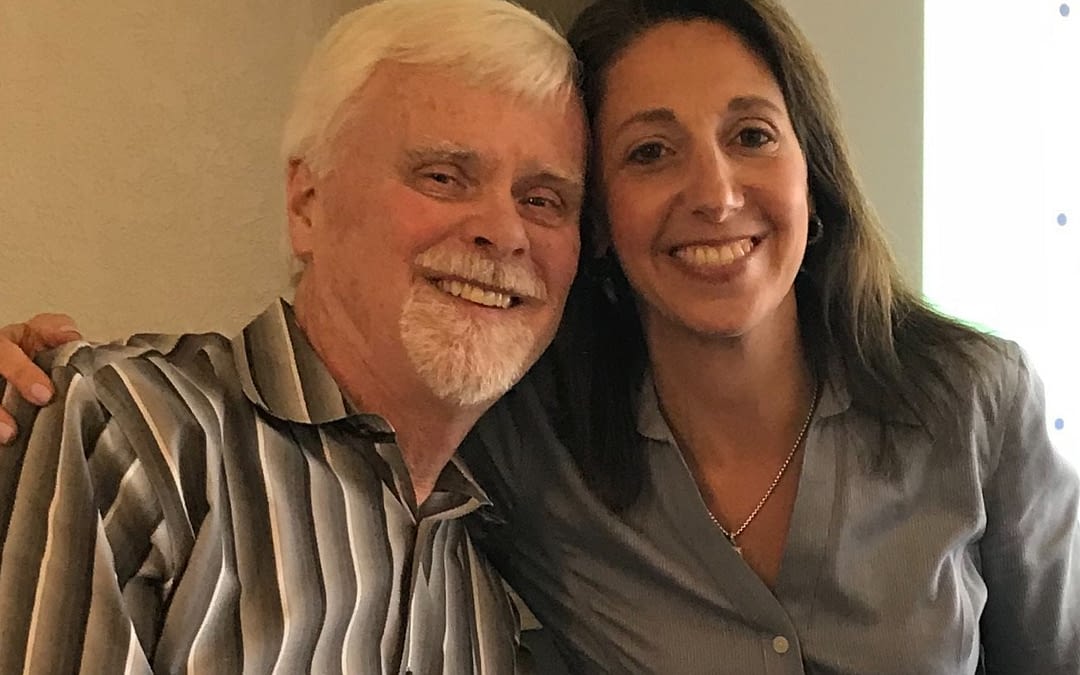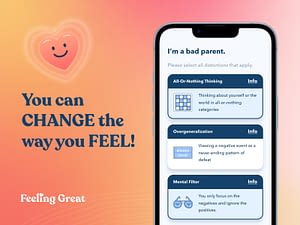TEAM Trauma Treatment–
How Does It Work? And Why?
Featuring Dr. Jill Levitt
Today’s podcast features one of our favorite guests, Dr. Jill Levitt, who is one of the greatest psychology teachers on planet earth. We explore trauma, and how it is treated. We focus in particular on the unique features of trauma treatment using TEAM CBT.
Jill is currently the Director of Training at the Feeling Good Institute in Mountain View, California, but she has had intensive training in trauma treatment beginning during her psychology internship at the Cornell Medical Center (? is this correct) in 200? (dates please Jill) and continuing until (date please.) She worked with adults survivors of childhood physical and sexual abuse, as well as victims of the 2011 tragedy at the world trade center, which happened when she was working in New York. She got extra training from several outstanding experts in the treatment of trauma and anxiety, including the renown Dr. Edna Foa, from Temple University in Philadelphia, as well as (please list if you like, Jill!)
Rhonda also has extensive experience in the treatment of trauma since she worked for (x years, please fill in) at th San Francisco Rape and Trauma Clinical. Rhonda emphasized the importance of shame and toxic but high irrational self-blame so often seen in trauma patients of all ages, including, of course, children.
Jill and Rhonda emphasized the importance of the selective use of exposure techniques with trauma patients, and the unfortunate fear that many, and perhaps most, therapists have of these techniques, wrongly fearing that the patient will decompensate and that the therapist, too, will become overwhelmed when hearing the patient recount their horrific experiences in detail.
I, David, will add that I’ve never had a negative experience with the use of exposure techniques, like cognitive flooding, memory rescripting, and many more with any trauma patients. However, I always do E = Empathy first, as well as A = Paradoxical Agenda Setting, to guarantee that the patient and I will be working together as a collaborative team.
Rhonda asked us to talk a bit about “vicarious trauma” that the therapist might experience when working with trauma patients. Both Jill and David said they’ve never experienced this, and that only our thoughts, and not the experiences our patients describe, can upset us. We believe the concept of “vicarious trauma” is highly (but not intentionally) misleading and needlessly frightening to those working with trauma patients.
Of course, if a therapist does become triggered when working with any patient, including a trauma patient, that is grist for the mill for the therapist to work out with their own therapist, using perhaps the Daily Mood Log to explore and challenge the therapist’s upsetting negative thoughts.
Perhaps the most important theme today focused on the treatment of trauma patients–as well as non-trauma patients–individually, using TEAM to pinpoint one moment the patient was upset, and exploring their negative thoughts and feelings with the help of the Daily Mood Log, as well as the other vitally important components of T E A M.
I (David) do not place much stock in treating patients with “formulas” based on their “diagnosis” or problem. I did 20 or more two day trauma workshops around the US and Canada several years back, and treated a volunteer from the audience at each workshop on the evening of day 1, using a two-hour TEAM CBT session. In all or nearly all of these sessions, the individuals experienced a triumphant and blow-away elimination of all their negative feelings by the end of the demonstration.
But here’s the interesting thing: although I occasionally included cognitive exposure, it was perhaps the technique I used the least often with these individuals. Far more powerful for most were techniques like Explain the Distortions, the Paradoxical Double Standard Technique, and the Externalization of Voices. Sometime, an interpersonal technique, including the Five Secrets of Effective Communication, was helpful, even life-changing.
If you are interested, you can read about those sessions in Chapter X in my most recent book, Feeling Great, as well as illustrations of the data from all the patients, showing the dramatic changes in negative and positive feelings from the start to the end of the sessions.
Why did these individuals recover so dramatically and quickly–within a single session? I believe it was because I focused on what was upsetting THEM, and developing an agenda and selecting methods to focus on what they wanted. This, to my way of thinking, is different, even radically different, from imposing a pre-set agenda on patients simply because we think they have some type of trauma diagnosis.
David described the three elements of an “abuse contract” between the abuser and the victim:
- I get to hurt or exploit you for my own pleasure.
- The Blame will be 100% on you. I am a blameless, superior god.
- We must keep this as a secret, even between us. If you violate this, I will hurt you very badly.
Thanks for listening today!
Jill, Rhonda, and David
Contact information
You can contact Dr. Jill Levitt at jilllevitt@feelinggoodinstitute.com
Dr. Rhonda Barovsky is a Level 5 Certified TEAM-CBT therapist and trainer and specializes in the treatment of trauma, anxiety, depression, and relationship problems. Check out her website: www.feelinggreattherapycenter.com.
You can reach Dr. Burns at david@feelinggood.com.
Feeling down in these turbulent times? Take a ride on our Feeling Great app.
Feeling Great feels wonderful!
You owe it to yourself to feel GREAT!
And Hey, did you hear?
It’s totally FREE FREE FREE all summer!
Jump on this offer and share it with friends who might be hurting!
Give the Greatest Gifts of ALL–Love and Happiness!



